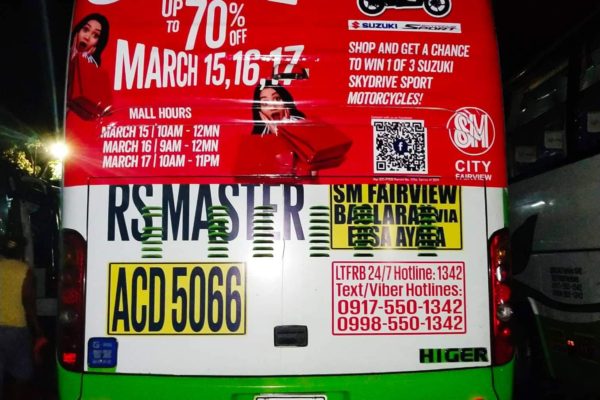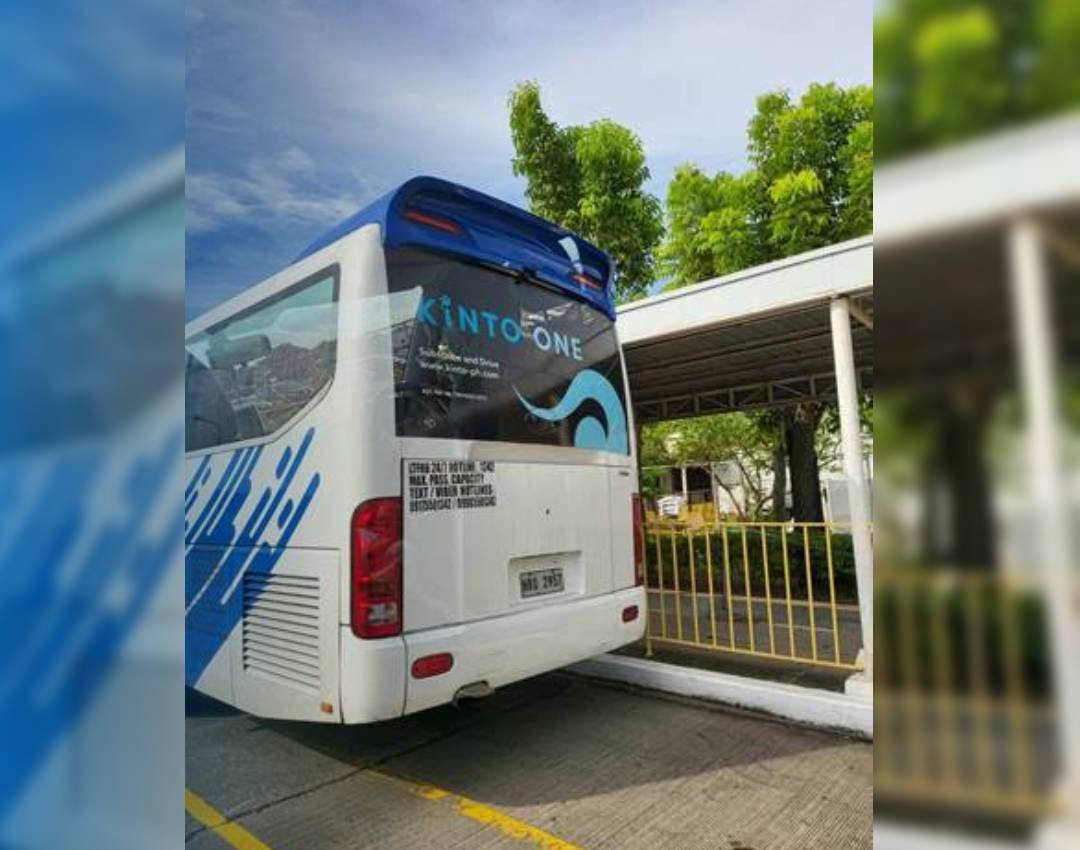Transit Advertising Philippines: Reach Thousands of Commuters Daily
Transit Advertising Philippines: Reach Thousands of Commuters Daily
Blog Article
Recognizing the Role of Transportation Marketing in Enhancing Brand Exposure and Consumer Involvement
Transportation advertising has actually become a critical component in the advertising landscape, offering one-of-a-kind chances for brands to elevate their exposure and engage consumers properly. With the ability to get to a restricted and varied audience throughout their daily commutes, these marketing techniques are not just about exposure; they are about developing meaningful connections with prospective clients. As we discover the multifaceted benefits and innovative techniques within transportation advertising, it ends up being important to think about exactly how these elements collectively affect customer assumption and actions, questioning concerning their lasting influence on brand commitment.
Meaning of Transit Marketing
Transportation advertising and marketing refers to the method of promoting products, solutions, or brands via ads placed around public transport systems. This kind of marketing incorporates a variety of positionings, consisting of posters on buses and trains, electronic screens at transportation stations, and covers on the exterior of automobiles. It intends to get to a varied target market, exploiting on the high foot website traffic connected with public transit.
Transportation advertising and marketing is strategically positioned to catch the attention of commuters, who commonly invest considerable time traveling or waiting. By integrating promotions into the day-to-day regimens of individuals, brand names can create a lasting impact and foster brand name acknowledgment. The medium is particularly reliable in metropolitan environments, where public transport is a key setting of traveling.
Additionally, transit marketing can promote local targeting, enabling businesses to get to certain demographics based on transit routes and station places. As urban populations expand and the use of public transport boosts, this marketing technique has gotten prominence as a crucial component of incorporated advertising techniques. The vibrant nature of transit advertising and marketing, integrated with its capacity to engage customers in a captive setting, highlights its importance in contemporary advertising methods.
Advantages of Transit Marketing
The effectiveness of transportation advertising depends on its capacity to deliver a plethora of benefits to brand names looking for to improve visibility and involvement. Among the main advantages is the considerable reach it uses; transit ads can properly target diverse demographics throughout urban locations, getting to both pedestrians and travelers alike. This wide direct exposure substantially enhances brand name recognition.
One more benefit is the high regularity of impressions. As transportation cars follow recognized routes and quit at several areas, they create repetitive direct exposure that reinforces brand name messages. This regularity promotes experience, which is critical in customer decision-making.
Transportation marketing is likewise affordable compared to various other media systems. Offered its large reach and capacity for high perceptions, brand names typically experience a lower expense per thousand perceptions (CPM), maximizing their marketing budget.
Moreover, transportation advertisements can develop a sense of neighborhood link. By lining up with regional transit systems, brand names can resonate with regional target markets and cultivate a feeling of local pride. This local strategy improves brand loyalty and engagement, making transit advertising and marketing a compelling choice for businesses aiming to solidify their visibility in the market.

Efficient Strategies for Transportation Campaigns
To make the most of the influence of transportation campaigns, brand names must take advantage of strategic preparation and execution tailored to their target market. First, identifying the group attributes of the audience using public transportation is vital. This permits brand names to produce personalized messaging that reverberates with prospective clients.
Following, picking the right transit mediums is necessary. Whether making use of bus covers, subway posters, or digital screens, each tool has distinct benefits that can improve visibility. For circumstances, click for source dynamic visuals on bus covers can attract interest, while digital advertisements can be updated often to reflect prompt promotions.
Furthermore, integrating a cohesive branding strategy throughout transportation platforms ensures consistency and reinforces the brand name's identity. Using captivating layouts and memorable taglines will certainly enhance brand name recall amongst travelers.
Lastly, timing is a key element in implementing effective transportation projects. Releasing campaigns throughout peak travel hours or local events can dramatically enhance exposure and interaction. By using these strategies, brands can properly harness the possibility of transit advertising and marketing, promoting greater awareness and connection with their target market. Inevitably, a well-executed transportation project can drive considerable development in brand visibility and consumer engagement.

Measuring Influence and Involvement
In examining the efficiency of transit ad campaign, accurate dimension of effect and engagement is essential for brand names seeking to optimize their advertising and marketing methods. Metrics such as reach, frequency, and impressions give foundational information to analyze exposure. Analyzing these variables assists figure out the number of potential customers are revealed to the promotions throughout their daily commutes.
Engagement can be more evaluated through consumer interactions, such as website web traffic, social networks discusses, and straight reactions to calls-to-action featured in the advertisements. Using tools like QR codes or one-of-a-kind Links can assist in tracking of customer behavior directly linked to transportation campaigns. Surveys and comments mechanisms likewise function as beneficial techniques to gather qualitative data on customer understandings and recall of the promotion.
Furthermore, progressed analytics and acknowledgment models can correlate transit direct exposure with succeeding acquiring actions, offering insights into the return on financial investment. By employing an extensive technique that incorporates quantitative and qualitative procedures, brand names can establish a nuanced understanding of their transportation advertising and marketing influence. Ultimately, this data-driven method makes it possible for brand names to improve their campaigns, ensuring they resonate properly with target market and enhance total brand name visibility.
Study of Effective Projects
Successful transit marketing campaign work as engaging instances of just how efficient techniques can boost brand name visibility and interaction. Transit Advertising Philippines. One remarkable instance is the Web Site "I Love New york city" campaign, he said which changed the city's image and attracted millions of tourists. By using train advertisements, signboards, and bus covers, the project produced a strong, natural brand name identification, leading to a substantial uptick in tourist and regional company patronage
Another exemplary campaign is Coca-Cola's "Share a Coke" initiative, which leveraged transportation advertising to individualize the brand experience. By featuring popular names on promotional products throughout various transportation systems, Coca-Cola promoted a much deeper psychological connection with consumers, motivating them to share their experiences on social networks.
Additionally, the "Got Milk?" project efficiently utilized mass transit advertisements to get to a broad target market, enhancing the message of the relevance of milk in a balanced diet plan. The project saw a measurable boost in milk usage in target demographics.
These situation research studies illustrate that when performed thoughtfully, transportation marketing can substantially enhance brand name presence, foster customer interaction, and drive measurable results, showing its important role in modern advertising techniques. - Transit Advertising Philippines
Verdict
In conclusion, transportation advertising offers as an essential device for enhancing brand name visibility and promoting customer interaction. Inevitably, the ability to gauge engagement and assess successful case research studies underscores the efficiency of transit marketing in driving brand name commitment and consumer interactions.
Transit advertising and marketing has emerged as a critical element in the marketing landscape, supplying one-of-a-kind possibilities for brands to elevate their visibility and involve customers successfully.Furthermore, transit advertising and marketing can promote local targeting, enabling services to reach particular demographics based on transit paths and station areas.In evaluating the performance of transportation marketing campaigns, accurate measurement of influence and involvement is vital for brand names looking for to enhance their advertising methods.Effective transit advertising and marketing campaigns serve as engaging instances of just how effective techniques can raise brand visibility and interaction.In final thought, transit advertising offers as an essential device for improving brand name exposure and promoting consumer engagement.
Report this page